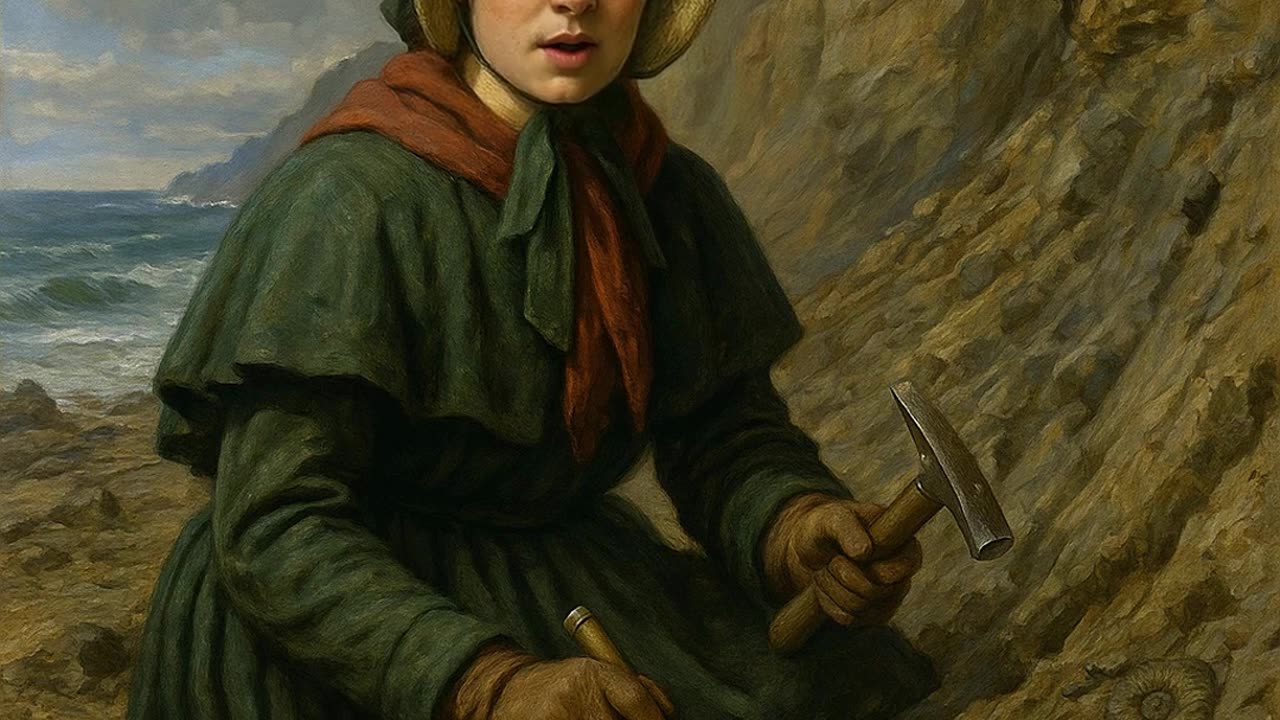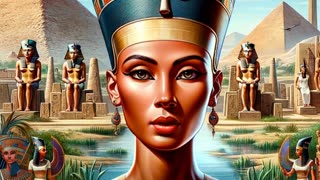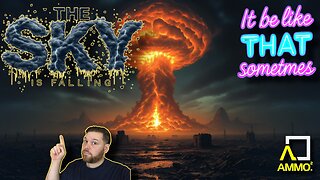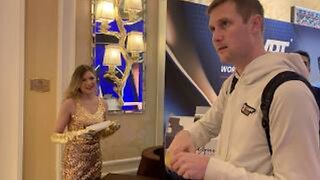Premium Only Content

Mary Anning Tells of Growing Up Poor and Becoming One of the Most Influential Woman Scientist
Presented to you by: http://www.HistoricalConquest.com
Read more on our blog at: https://www.historicalconquest.com/blog
I was born in 1799 in the seaside town of Lyme Regis, along the southern coast of England. It was a rugged place, full of sea winds, towering cliffs, and strange stones buried in the rocks. My family was poor—my father, Richard, was a carpenter who sold curiosities he found in the cliffs. Some were shells, others were fossilized bones. He called them “sea dragons” to tourists who didn’t know what they were. That was how I first got into fossil hunting—before I could even read, I was out on the rocks with him, scraping through the mud and stone with a hammer in hand.
When I was just eleven years old, my father died. It was sudden, and it left our family in terrible debt. But I had learned something valuable from him: how to find fossils, and more importantly, how to sell them. Tourists came to Lyme Regis looking for odd things to take home, and I gave them what they wanted. At first, it was mostly ammonites and little shells, but one day, I found something much bigger.
I was twelve years old when I uncovered the skull of a massive creature—something no one had ever seen in full. It took me months to dig it out of the cliffside. What I found was an Ichthyosaur, an extinct marine reptile from the age of the dinosaurs. I didn’t know the word then, of course, because no one really did. The idea that species could go extinct was still being debated. But there it was, staring back at me with giant stone eyes. My discovery was the first complete Ichthyosaur skeleton ever found.
Over the years, I found many more incredible fossils—Plesiosaurs, Pterosaurs, and even ancient fish. I became one of the leading fossil collectors in England, though you wouldn’t have read about me in the scientific journals of the time. Why? Because I was a woman. In the early 1800s, women weren’t allowed into scientific societies. I wasn’t invited to meetings. I wasn’t listed as the author on the papers, even though I had done the work. Wealthy, educated men would come to me, ask questions, buy my fossils, and then publish my findings under their own names. I was angry about it, but I didn’t stop. I kept digging. I kept learning. I even taught myself anatomy and geology by reading every book I could borrow.
Despite all that, some of those same men respected me deeply. They knew I had an eye for details and could identify bones better than most trained scholars. One of them once said, “She understands more of the science than most men in the kingdom.” That meant a lot, but I still wished the world would let me stand beside them, not behind them.
I lived my whole life in Lyme Regis. I never married, and I never became wealthy. Most of the money I earned went back into my work—buying tools, books, or supporting my family. But I was proud of what I did. The fossils I uncovered helped change how people thought about life on Earth. They proved that strange creatures once lived in oceans and skies long before humans ever walked the Earth. They helped pave the way for the theory of evolution and the science of paleontology.
I died in 1847 at the age of 47, from breast cancer. It wasn’t until after my death that people truly began to recognize my contributions to science. Today, I’m considered one of the most important fossil hunters in history—a pioneer in a time when women like me weren’t even supposed to have voices in science. So if there’s something I want you to remember, it’s this: you don’t need permission to be curious. You don’t need a fancy title or a university degree to make a difference. You just need passion, persistence, and the courage to chase what others overlook.
I chased bones in the cliffs—and found a whole new chapter of Earth’s story. And if I could do that, you can chase your own discoveries, too.
#MaryAnning
#MotherOfPaleontology
#JurassicCoast
#SheSellsSeashells
#FossilHunter
#PaleoInspiration
#WomenInScience
#HistoryTok
#HistoryReels
#MuseumMoment
#LymeRegis
#FossilFriday
#PaleoArt
#AncientEarth
#GeologyRocks
#HerStory
#ScienceHistory
#TrailblazingWomen
#UntoldVoices
#HeritageEducation
-
 0:59
0:59
The Historical Conquest Channel
12 days agoNefititi Tells Her Story in Ancient Egypt
27 -

Inverted World Live
4 hours agoThe Halloween Special with Drea De Matteo and Sam Tripoli | Ep. 133
155K7 -
 2:57:52
2:57:52
Laura Loomer
7 hours agoEP154: Naturalized US Navy Medic From GAZA Exposed For Ties To Hamas
28.7K17 -
 35:45
35:45
Stephen Gardner
10 hours ago🔴BREAKING: Election Auditor EXPOSES Democrat Election Fraud Evidence!
14.3K35 -
 15:48
15:48
Sponsored By Jesus Podcast
14 hours agoHow to Stop Being JEALOUS | When Comparison Steals Your Joy
2.44K8 -
 LIVE
LIVE
DLDAfterDark
4 hours agoDon't Worry - Things Will Get SO Much Worse! Sometimes It Be Like That
441 watching -
 25:41
25:41
Robbi On The Record
10 hours agoThe Billion-Dollar Lie Behind OnlyFans “Empowerment” (Her Testimony Will Shock You) | part II
3.71K5 -
 12:22
12:22
Cash Jordan
2 hours ago"CHICAGO MOB" Fights Back... "ZERO MERCY" Marines DEFY Judge, SMASH ILLEGALS
7.98K23 -
 46:58
46:58
Brad Owen Poker
14 hours agoI Make QUAD ACES!!! BIGGEST Bounty Of My Life! Turning $0 Into $10,000+! Must See! Poker Vlog Ep 323
4.28K3 -
 2:52:28
2:52:28
TimcastIRL
5 hours agoSTATE OF EMERGENCY Declared Over Food Stamp CRISIS, Judge Says Trump MUST FUND SNAP | Timcast IRL
207K116